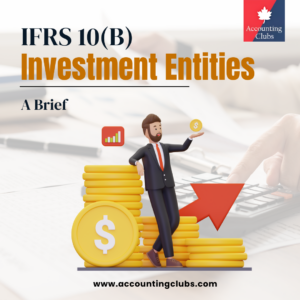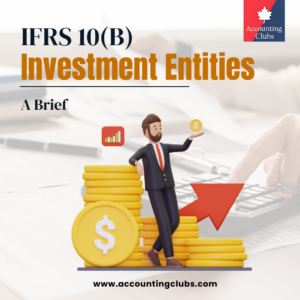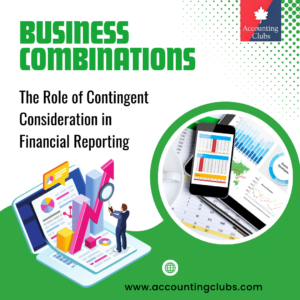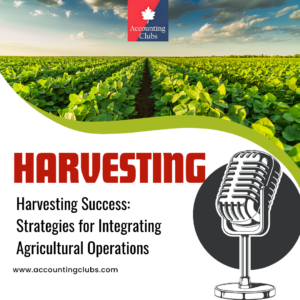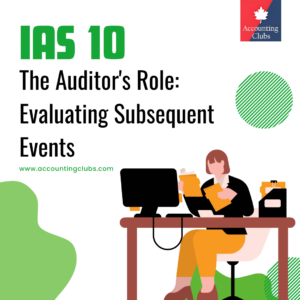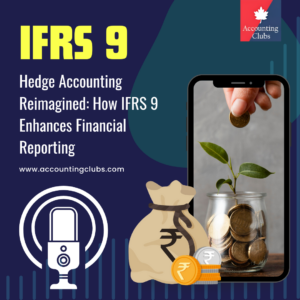Chapter 1: Introduction
A liability is a “present obligation of the entity arising from past events, the settlement of which is expected to result in an outflow from the entity of resources embodying economic benefits”. A provision is “a liability of uncertain timing or amount”. IAS 37 sets out the requirements for recognition, measurement and disclosure of provisions. It also sets out the presentation and disclosure requirements for contingent liabilities and contingent assets.
Scope
IAS 37 applies to the accounting for provisions, contingent liabilities and contingent assets, except for executory contracts and those arrangements covered by another standard.
Executory contracts are contracts under which neither party has performed any of its obligations, or both parties have partially performed their obligations to an equal extent. Executory contracts encompass commitments to purchase goods or to deliver services where performance has not yet happened. An executory contract might be onerous, in which case the requirements in IAS 37 for onerous contracts are applied.
IAS 37 does not apply to financial instruments, including financial guarantee contracts, that are within the scope of IFRS 9. Some financial guarantee contracts might be within the scope of either IFRS 9 or IFRS 4.
Executory contracts
Executory contracts are contracts under which neither party has performed any of its obligations, or both parties have partially performed their obligations to an equal extent. Executory contracts do not fall within the scope of IAS 37 unless they are onerous.
Examples of executory contracts include:
- employee contracts in respect of continuing employment;
- contracts for future delivery of services such as gas and electricity;
- obligations to pay local authority charges; and
- most purchase orders.
IAS 37 also does not apply to provisions, contingent liabilities or contingent assets covered specifically by another standard, such as:
- business combinations (IFRS 3);
- revenue from contracts with customers (IFRS 15) (except for contracts with customers that are, or have become, onerous);
- income taxes (IAS 12);
- leases (IFRS 16) (except for onerous leases to which the low-value or short-term exemption has been applied and leases which became onerous before the commencement date of the lease);
- employee benefits (IAS 19); and
- insurance contracts (IFRS 4) (insurers should apply IAS 37 to provisions, contingent liabilities and contingent assets, other than those arising from contractual obligations and rights under insurance contracts within IFRS 4’s scope).
IAS 37 scope when applying IAS 17
Entities applying IAS 17 should apply IAS 37 to onerous operating leases. Provision recognition criteria.
The word ‘provision’ could be used to describe amounts that are deducted from assets to arrive at their balance sheet carrying amount. For example, provisions are made for depreciation or amortisation or the impairment of financial or non-financial assets. These are not provisions and are not within the scope of IAS 37. These relate to the measurement of assets, and they are adjustments made to determine the assets’ carrying value.
IAS 37 does not specify whether a debit arising when a provision is recognised is treated as an expense or an asset.
Provisions versus other liabilities
A provision is “a liability of uncertain timing or amount”. Provisions differ from other liabilities in the degree of certainty about the amount or the timing of the payment. So, there is a clear distinction between provisions and other liabilities such as trade payables and accruals.
Definition and Recognition
Provisions
IAS 37 defines a provision as a liability of uncertain timing or amount, i.e. a subset of liabilities. A liability is a present obligation of the entity arising from past events, the settlement of which is expected to result in an outflow from the entity of resources embodying economic benefits.
Note that the definition of a liability in IAS 37 was not revised following the revision of the definition of a liability in the Conceptual Framework for Financial Reporting issued in 2018.
A provision should be recognised when and only when:
- an entity has a present obligation (legal or constructive) as a result of a past event;
- an outflow of resources embodying economic benefits will probably be required to settle the obligation; and
- a reliable estimate can be made of the amount of the obligation.
These recognition criteria cover two elements: the existence of a liability and the measurement of that liability.
The existence element is further subdivided into two conditions.
Contingent liabilities and contingent assets
IAS 37 uses the term ‘contingent’ for liabilities and assets that are not recognised because their existence will be confirmed only by the occurrence or non-occurrence of one or more uncertain future events that are not wholly within the entity’s control. The term ‘contingent liability’ is also used for liabilities that do not meet the recognition criteria in IAS 37.
Contingent liabilities
A contingent liability is defined as:
- a possible obligation that arises from past events and whose existence will be confirmed only by the occurrence or non-occurrence of one or more uncertain future events not wholly within the control of the entity; or
- a present obligation that arises from past events that is not recognised because:
- it is not probable that an outflow of resources embodying economic benefits will be required to settle the obligation; or
- the amount of the obligation cannot be measured with sufficient reliability.
Under IAS 37, a reporting entity should not recognise a contingent liability in its statement of financial position.
Therefore, a contingent liability, which is not recognised but is disclosed by way of note, results when one or more of the three recognition criteria for a provision, is not met.
The table below illustrates the application of the recognition criteria.
Situation Provision? Action Past event has occurred, resulting in a possible obligation for which a transfer of benefits is possible but not probable. ✗ Unless the possibility of a transfer of benefits is remote, disclose a contingent liability. Past event has occurred, resulting in a present obligation for which there may possibly be a transfer of benefits, but for which there probably will not. ✗ Unless the possibility of a transfer of benefits is remote, disclose a contingent liability. Past event has occurred, resulting in a present obligation for which it is likely there will be a transfer of benefits, but a reliable estimate cannot be made of the amount of the obligation. ✗ Disclose a contingent liability. (N.B. This situation is likely to be very rare) Past event has occurred, resulting in a present obligation for which it is likely there will be a transfer of benefits; a reliable estimate can be made of the amount of the obligation. ✓ Recognise provision and make necessary disclosures. An obligating event has not taken place by the end of the reporting period, but it takes place after the reporting period, resulting in an obligation for which it is likely there will be a transfer of benefits; a reliable estimate can be made of the amount of the obligation. ✗ Consider whether IAS 10 requires disclosure of the non-adjusting event.
Spectrum of liability
Payables, provisions, disclosed contingencies and remote contingencies lie on a spectrum, and the probability of an outflow of economic benefits to settle an obligation might move between all four of those categories during its existence. At one extreme, where the possibility of an outflow of economic benefits to settle the obligation is remote, no disclosure is required. When the possibility of an outflow of economic benefits becomes more than remote but less than probable, a contingent liability is disclosed. If it becomes probable that there will be an outflow of economic benefits, a provision is recognised. When the amount and timing of the liability become certain, the obligation is presented as a ‘trade or other payable’ or as a financial liability.
A contingent liability should not be recognised. It should be disclosed unless the possibility of an outflow is remote.
Sometimes, entities are jointly and severally liable for an obligation. Joint and several obligations often arise in joint arrangements where two or more parties cooperate to build, develop or exploit a particular product. Where joint and several obligations arise, the part of the obligation that is expected to be met by other parties is treated as a contingent liability. The guidance in IAS 37 is applied to the part of the obligation that will be met by the entity itself.
Contingent assets
A contingent asset is “a possible asset that arises from past events and whose existence will be confirmed only by the occurrence or non-occurrence of one or more uncertain future events not wholly within the control of the entity”.
Contingent assets generally arise from unplanned or other unexpected events that give rise to the possibility of an inflow of resources embodying economic benefits to the entity.
IAS 37 does not permit the recognition of contingent assets. Contingent assets are disclosed only when an inflow of economic benefits is probable. This is different from contingent liabilities, where disclosure is required unless an outflow is remote.
A contingent asset is not recognised, because it might result in the recognition of income that is never realised. When it becomes virtually certain that an inflow of economic benefits will arise, the asset is no longer a contingent asset and should be recognised in the period in which the change occurs (that is, when the future event occurs and confirms the asset’s existence, or when it becomes virtually certain that the future event will confirm the asset’s existence and it is virtually certain that the asset will be realised).
Deposits relating to taxes other than income tax
There is no guidance within IAS 37 about accounting for deposits made by an entity that relate to taxes other than income taxes and are therefore outside the scope of IAS 12.
For example, an entity and a tax authority are disputing whether the entity is required to pay a tax, which is not an income tax. When the entity takes into account all available evidence, it is more likely than not that the dispute will be resolved in the entity’s favour. Given the evidence, the entity applies IAS 37 and discloses a contingent liability, without recognising a liability. To avoid possible penalties, the entity has also deposited the disputed amount with the tax authority. When the dispute is resolved, the tax authority will be required to either refund the tax deposit to the entity (if the dispute is resolved in the entity’s favour) or use the deposit to settle the entity’s liability (if the dispute is resolved in the tax authority’s favour). In January 2019, the IFRS IC issued an agenda decision which noted that such a deposit to the tax authority gives the entity a right to obtain future economic benefits, either by receiving a cash refund or by using the payment to settle the tax liability.
Therefore, the right is not a contingent asset as defined by IAS 37, because it is an asset, and not a possible asset, of the entity. The nature of the tax deposit (whether voluntary or required) does not affect the entity’s right and therefore does not affect the conclusion that there is an asset. As part of the IFRS IC agenda decision, the Committee noted that no standard specifically applies to the asset. As a consequence, an entity would need to apply IAS 8 and use judgement in developing and applying an accounting policy for the asset. The agenda decision observes that the accounting for the tax deposit could be similar or related to that for monetary assets. If this is the case, the entity would need to refer to requirements relating to monetary assets.
Distinguishing provisions from other liabilities
Provisions can be distinguished from other types of liability, including those that involve uncertain amounts, by considering the events that give rise to the obligation and also the degree of uncertainty as to the amount of the liability. In each case, the definition of a liability will be met through the existence of a present obligation arising from a past event.
For example, trade payables are liabilities to pay for goods/services already received/supplied and which have been invoiced or otherwise agreed with the supplier. Accruals, on the other hand, are liabilities to pay for goods/services already received/supplied but which have not been invoiced or otherwise agreed with the supplier. Although it is sometimes necessary to estimate the amount or timing of accruals, the uncertainty is generally much less than for provisions. Accruals are often reported as part of trade and other payables, whereas provisions are reported separately.
| Example | Classification | Degree of uncertainty |
| Goods or services received and invoiced | Trade payable | None |
| Goods or services received, but not invoiced | Accrual | Some |
| Legal claim from supplier for breach of exclusive supply agreement | Provision
(if conditions met) |
Significant |
Amounts recognised as provisions will often relate to items such as legal claims, warranties given in respect of goods sold or services provided, restructurings and decommissioning obligations.
Provision recognition criteria
A provision is recognised where all of the following conditions are met: An entity has a present obligation as a result of a past event. It is probable that an outflow of resources embodying economic benefits will be required to settle the obligation. A reliable estimate can be made of the amount of the obligation.
Flow chart illustrating the criteria for recognition
These criteria for provision recognition are illustrated in IAS 37 by the use of a flow chart, which is reproduced below.
Present obligation
A present obligation can arise from a legal agreement (a ‘legal obligation’) or might arise from an entity’s past practice, published policy or current statement (a ‘constructive obligation’).
Present obligations and past events
Obligating event – definition
As will be clear from the table above, the existence of a present obligation arising from a past obligating event is a key consideration when determining whether classification as a provision or as a contingent liability is appropriate.
As defined in IAS 37, an obligating event is an event that creates a legal or constructive obligation that results in an entity having no realistic alternative to settling that obligation. A legal obligation derives either from the terms of a contract (whether explicit or implicit), or legislation or other operation of the law. A constructive obligation is an obligation deriving from an entity’s actions when:
- by an established pattern of past practice, published policies or a sufficiently specific current statement, the entity has indicated to other parties that it will accept certain responsibilities; and
- as a result, the entity has created a valid expectation on the part of those other parties that it will discharge those responsibilities.
Provisions recognised for liabilities that exist at the end of the reporting period
Financial statements deal with the financial position of an entity at the end of its reporting period and not its possible position in the future. The only liabilities recognised in an entity’s statement of financial position are those that exist at the end of the reporting period. Therefore, no provision is recognised for costs that need to be incurred to operate in the future, notwithstanding that such costs may be necessary to continue as a going concern.
Accordingly, if an obligation exists at the end of the reporting period, that obligation will exist irrespective of whether the reporting entity continues to trade after the end of the reporting period. Conversely, any outflow that can be avoided by ceasing to trade will not be an obligation at the end of the reporting period.
A reporting entity may be aware of some future commitment to spend money, and may even feel less well off at the prospect of the expense. But future expenditure, however necessary, does not justify the recognition of a provision unless a liability exists at the end of the reporting period.
Provisions recognised for obligations that exist independently of future actions
It is only those obligations arising from past events that exist independently of the reporting entity’s future actions that are recognised as provisions. One example in which a provision is recognised might be for clean-up costs relating to environmental damage. Even if the entity changes its future business activities (at an extreme, by ceasing to trade), it will still incur the expenses relating to cleaning up, because of its past activities.
Obligation for future costs – major refit and repair costs
The example of clean-up costs that will be incurred irrespective of an entity’s future actions can be contrasted with the circumstances in which ships and aircraft are required to undergo major work at regular intervals due to maritime and aviation law. No present obligation is created by the legal requirement to do the major work until the requisite number of hours or days have been completed. The cost of the major work is not recognised because, at the end of the reporting period, no obligation to undertake such major work exists independently of the entity’s future actions – the entity could avoid the future expenditure by its future actions, for example by selling the ship or aircraft.
Obligation to offset CO2e emissions
An entity has a legal or constructive obligation to offset a defined portion of the CO2e it emits in the current period. The present obligation to offset the CO2e emissions arises as the entity emits CO2e. At the end of the reporting period, to the extent that the recognition criteria in IAS 37 are met, the entity should recognise a provision which reflects the estimated CO2e emissions produced but not yet offset at the end of the reporting period, measured at its best estimate of the expenditure required to settle it.
Requirement for commitment to another party
An obligation always involves a commitment to another party. It is not necessary, however, to know the identity of the party to whom the obligation is owed – the obligation may be to the public at large.
Requirement for management decisions to have been communicated to affected parties
It is because of the requirement for a clear commitment to another party, that a decision made by management before the end of the reporting period does not of itself give rise to a present obligation, unless it is communicated to those affected by it in a sufficiently specific manner to raise a valid expectation in them that the entity will discharge its responsibilities.

